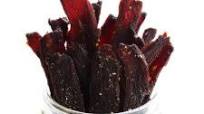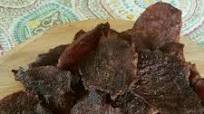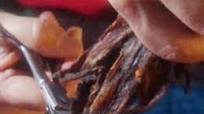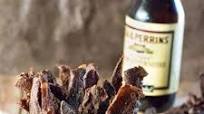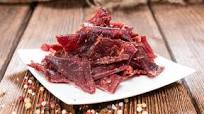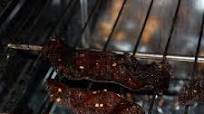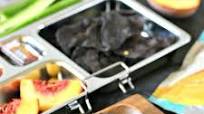What should I make for dinner tonight? This might just be the number one question that we ask ourselves almost daily over here.
Then you have come to the right place, we have rounded up 15 food dehydrator recipes beef jerky that we have shared over the years.
Plus, there is such a variety of flavours in these recipes, so you are sure to find something for you. Most of these recipes are quick and easy ones made especially for busy weeknights.
15 Food Dehydrator Recipes Beef Jerky
Beef Jerky
How to Make Beef Jerky in a Dehydrator
Doc’s Best Beef Jerky
Simple DIY Beef Jerky
3 Easy Dehydrator Jerky Recipes that Will Have Them Asking for More
Beef Jerky Made with a Dehydrator Recipe – (3.9/5)
Spicy Beef Jerky Recipe
Hickory Smoke Beef Jerky
Homemade Beef Jerky
How To Make Beef Jerky with a Dehydrator: Step by Step Guide
Beef Jerky Recipe
Peppered Beef Jerky
Spicy Black Pepper Beef Jerky (Made In The Oven)
How To Make Beef Jerky In a Dehydrator
How long do you leave beef jerky in a dehydrator?
Place strips on your dehydrator drying racks with plenty of spaces in between for easy air flow. Dry for 3 hours at 165 degrees allowing the internal temperature to reach 160 degrees and then turn down to 145F. Check the meat after 4 hours and keep drying until the jerky bends and cracks, but does not break in half.
What is the best meat to dehydrate for jerky?
While top round, bottom round, pectoral, and lifter are typically the best cuts, others like flank and skirt steak can also make great jerky. These cuts of beef are all lean, economical, and full of flavor.
What temperature do you set the dehydrator for beef jerky?
How do you know when beef jerky is done in a dehydrator?
The dry strip should exhibit a firm, flexible form that can easily bend completely back on itself without snapping. Dried jerky should not be crumbly but instead displays a leathery texture that tastes palatably chewy.
Can beef jerky be pink in the middle?
Cooked beef jerky should maintain a reddish hue albeit much darker. Some jerky may be closer to blackish-red, while other types lean towards purple.
Do you need to cook beef before dehydrating?
The USDA Meat and Poultry Hotline’s current recommendation for making jerky safely is to heat meat to 160 °F and poultry to 165 °F before the dehydrating process. This step assures that any bacteria present will be destroyed by wet heat.
Is brisket good for jerky?
1. Brisket Beef Jerky. Brisket is a premium, lean cut that gives off a good beefy flavor, and tough texture that’s ideal for making beef jerky. It often chews like a succulent steak, making it a popular choice with many small-batch beef jerky makers.
How thin do you slice beef jerky?
When it comes to slicing the meat, I recommend slicing it about as thin as possible (1/8 to 1/4-inch thick). And then if you want a chewier jerky (which I weirdly like), slice the meat with the grain. And if you want a more tender jerky, slice the meat against the grain.
Can you use ribeye for beef jerky?
The most ideal beef cuts for making jerky include flank steak, sirloin tip, top round, bottom round, and eye of round. That said, flank steak is the best possible meat for top-quality jerky. If flank steak isn’t available, then ribeye is a good alternative.
Can you dehydrate raw meat?
When raw meat or poultry is dehydrated at home — either in a warm oven or a food dehydrator — to make jerky which will be stored on the shelf, pathogenic bacteria are likely to survive the dry heat of a warm oven and especially the 130 to 140 °F of a food dehydrator.
Can jerky be over dehydrated?
Sometimes jerky can get a little too dry. Maybe you accidentally over-dried your homemade jerky, or forgot to seal that bag of your favorite store-bought jerky. Left with jerky that’s tough, stale, and crumbly, you might be wondering, can you rehydrate jerky, and the answer is yes.
Do you have to cook beef jerky after dehydrating?
For jerky to be safe, it should be heated to 160°F for beef and 165°F for turkey or chicken jerky BEFORE you dry your strips. Heating the jerky after dehydrating might not kill all bacteria due to it becoming more heat resistant during the drying process.
